After you've downloaded the Tabzilla plugin, you have a few different options for installing it to your Notes client.
| Table of Contents |
|---|
| NOTE: these instructions work for new installs as well as updates (i.e. installing a new version over an older version). An update will replace the old version with a new one, although a Notes client restart will always be required after the update. |
If you're installing the plugin for testing, or just for one or two users, the easiest installation method is to drag-n-drop the zip file to the My Widgets panel in your Notes client.
On the right-hand sidebar of your Notes client, you will see an icon for My Widgets. Click this to make the My Widgets panel visible, and drag-and-drop the Tabzilla zip file onto the panel:
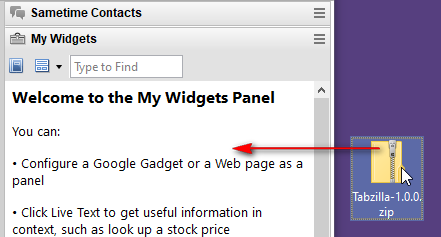
After a few seconds, you will get prompted to confirm the installation:
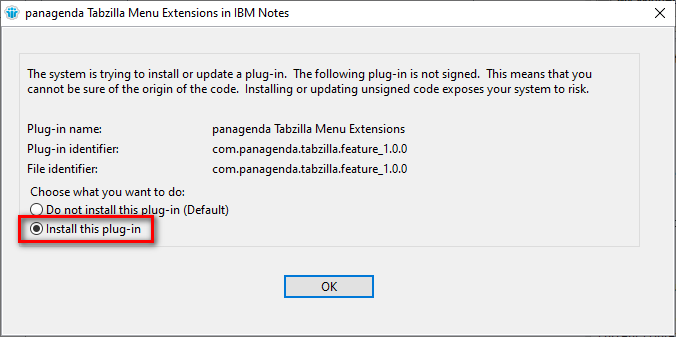
Choose the "Install this plug-in" option and click OK. Once the installation is complete, you will be prompted to restart the Notes client. After the client is restarted, the Tabzilla plugin will be active and running.
It's possible that your administrator has locked down your Notes client, so this type of widget installation isn't possible. If this is the case, please contact your administrator or try one of the other install methods below.
If multiple people in your organization will be installing the plugin, it's often best to use an Update Site database on a central Domino server.
If you don't already have an Update Site database, you can create one by making a new database and choosing "Eclipse Update Site" as a template (you must have the "Show advanced templates" box checked to see this template):
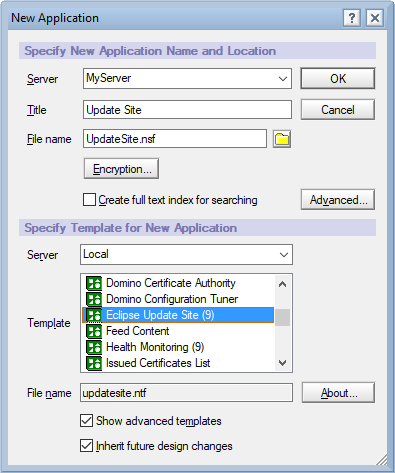
Unzip the Tabzilla zip file on your hard drive. In your Update Site database, click the Import Local Update Site button, browse to the site.xml file in the folder where you unzipped the Tabzilla files, and click OK:
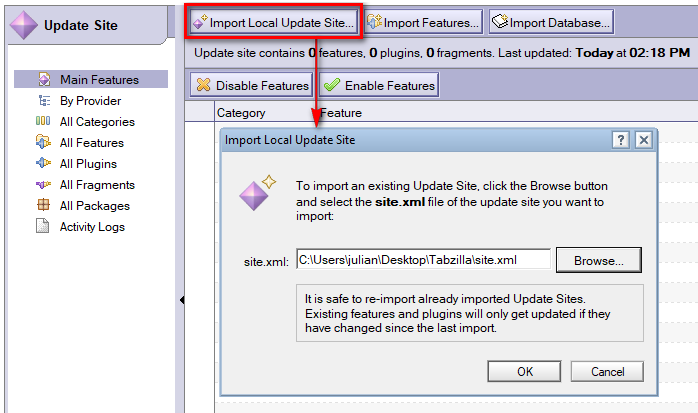
You will also need to get the URL of your Update Site database for the steps below. You can do this by choosing the menu item Actions - Show URLs... while the Update Site database is open. This will show you two URLs:
If you use the HTTP URL, you will need to make sure that the Domino HTTP task is running on your server.
Once the Tabzilla plugin is in an Update Site database, you can easily install it using panagenda MarvelClient (NOTE: you must have a MarvelClient license that includes Eclipse plugin install functionality).
Create a new Eclipse Plugin Install Action, with the following field values (non-default values are in bold green text):
| Install type: | Expeditor Provisioning |
|---|---|
| Show progress: | unchecked |
| Check signature: | unchecked |
| Allow restart prompt: | unchecked |
| Enable immediately: | checked |
| Update site: | the URL from your Update Site database in the previous step |
| Which feature(s): | A single feature |
| Feature ID: | com.panagenda.tabzilla.feature |
| Feature Version: | Get feature version from update site |
| Widget Name: | Use name of first installed feature |
| Certificate? | checked |
| Widget? | unchecked |
The easiest way to add this plugin to a Widget Catalog is to install it as a widget to your Notes client first, and then add your local widget to the Widget Catalog. HOWEVER, you need to make sure you add it from the Update Site database on a server (using the instructions below), not from drag-n-drop of the zip file.
The steps are:

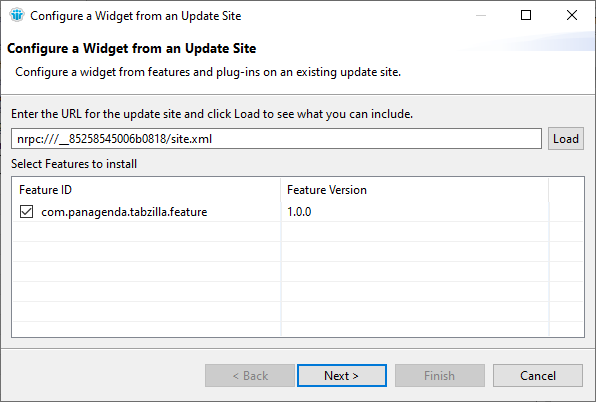
Depending on how your widget catalog and Domino infrastructure is set up, there might be additional things you need to do (approval, signing, deploying certificates, etc.) before the widget can be deployed properly. Documentation on how to use the Widget Catalog can be found at:
https://help.hcltechsw.com/domino/11.0.1/conf_catalogoptionsandaccess_c.html